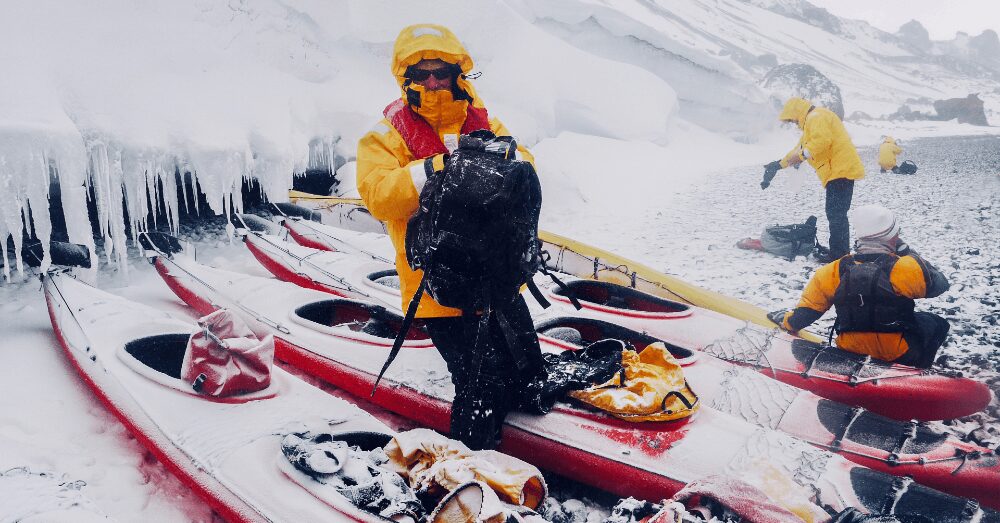Cold weather with wind, rain, and possibly snow can seem uninviting to some, but when you want to go cold weather kayaking, you’ll want to use these tips.
Paddling around on the water when its cold outside can be an awful experience if you’re not properly prepared for it. If you have the right gear and preparations, it can be a lot of fun and take you to places where you wouldn’t expect to go in your kayak. Will you heed these tips and paddle on the water with the right equipment and preparations?
The right kayak is crucial
The most important part of your kayaking experience is the boat itself. You might normally use a sit-on type of boat, but when you’re going to brave the winter cold and get on the water, you want to use a sit-in kayak with a closed cockpit design. This style provides better protection from cold water and wind. It’s important that your closed cockpit is sealed off and doesn’t allow water to enter the area where you sit. This style will help you stay warm and dry.
Dress for success
The right attire is an essential part of staying warm and dry when you want to enjoy some cold weather kayaking. A wetsuit, or in this case dry suit, is a great way to insulate your body from freezing cold water. In addition to the suite, you should wear layers of moisture-wicking clothing under your coat for warmth. You’ll also need neoprene gloves a hood and waterproof boots to protect your head, hands, and feet.
Be aware of the weather
Just because you’ve dressed in the right gear doesn’t mean you want to get stuck in a snowstorm, deal with freezing rain, or face extreme winds. You need to check the weather ahead of time so that you can be prepared for what could happen while you’re kayaking. It’s also a good idea to check the tides and see when they are high or low. You’ll want to plan your trip and be ready to postpone your adventure if the conditions worsen. The weather and tires are a huge part of being ready for what you might face when you’re spending your day in the elements.
Tell someone where you’re going
It’s important to inform friends and family members where you’re going and how long you’ll be gone. If you get lost while cold weather kayaking, you’ll want others to start looking for you right away. If you don’t tell anyone where you’re going, the best that they can do is start to look for your cell phone and the last place it showed a location. Informing others of your plans could be a lifesaver for you.
Safety First
Essential safety gear is necessary, especially when you’re on the water. Kayaking is an inherently dangerous activity that requires safety gear to be brought along with you during your time in the wilderness and outdoors. You need to have a flotation device, a whistle, a solar-powered flashlight, a signaling mirror, and a first aid kit. A small bilge pump can help remove water that enters the kayak, which might make your trip better. These safety items are a good starting point to keeping you safe and ready when you go cold weather kayaking.
You might have to rescue yourself
Self-rescue techniques can help you survive when something unexpected happens during your time on the water. You want to practice getting back in your kayak after capsizing, which could be how you save your own life while on the water. If you have to spend several hours in freezing cold water, there’s a chance you might not survive. Practice your rescue techniques in a controlled environment to ensure you have the skills necessary to survive when bad things happen.
Keep the food and water flowing
Some people think they don’t need to drink water simply because they aren’t sweating, but that’s not true at all. You need to stay hydrated and eat plenty of food to keep your strength up. Make sure you have some high-energy snacks to stay fueled during your trip, and drink lots of water to regulate your body temperature and stay hydrated. It’s important to be fueled up when you go cold weather kayaking, which means packing snacks and some warm beverages to enjoy during your time on and around the water.
These cold weather kayaking tips can save your life and give you the experience you want to enjoy when you’re out on the water during the winter months.

